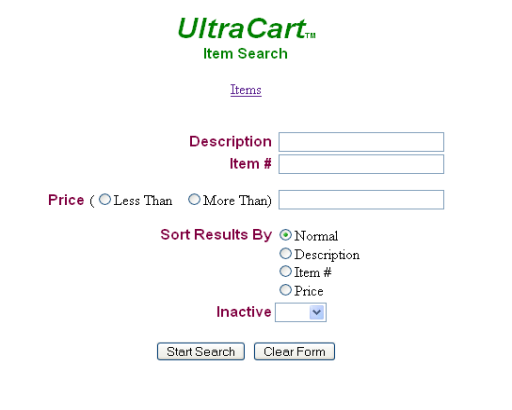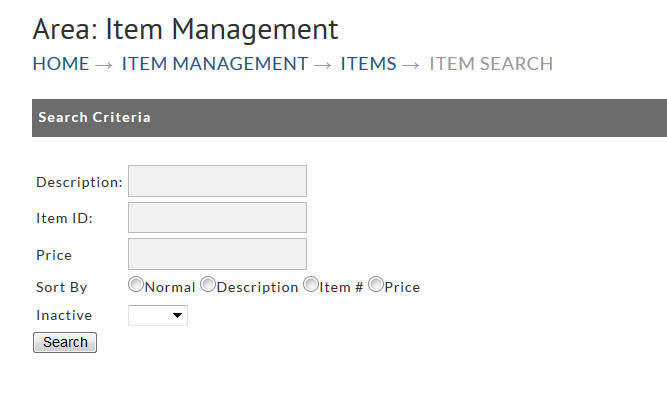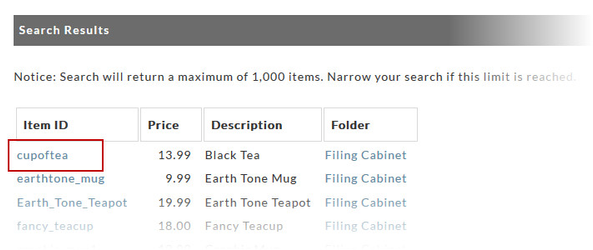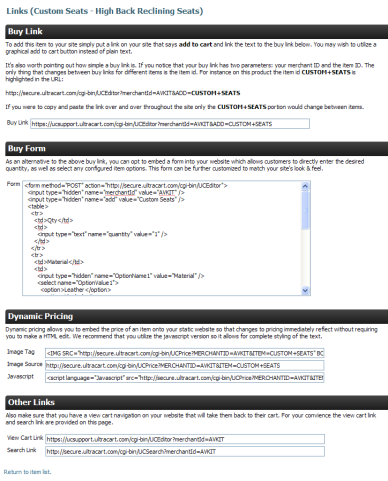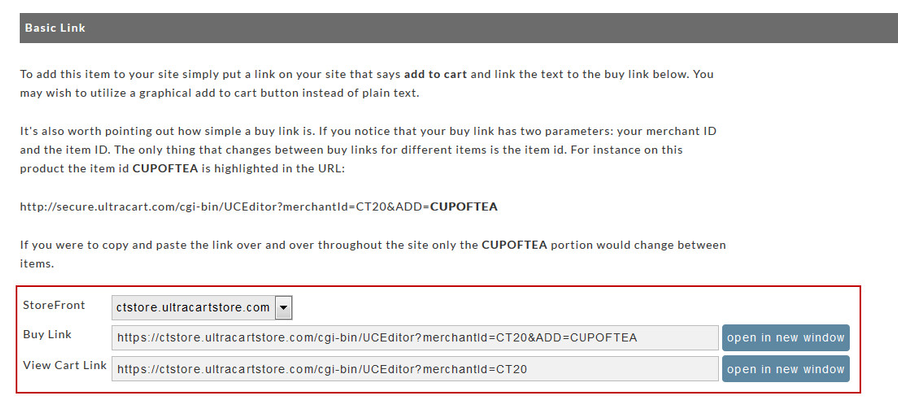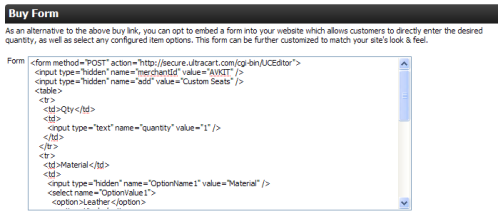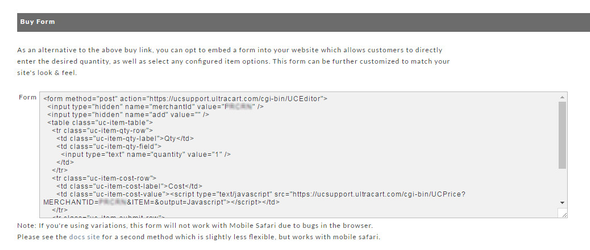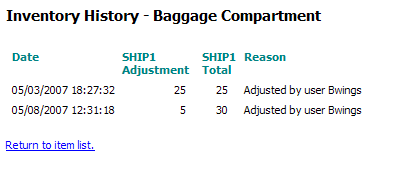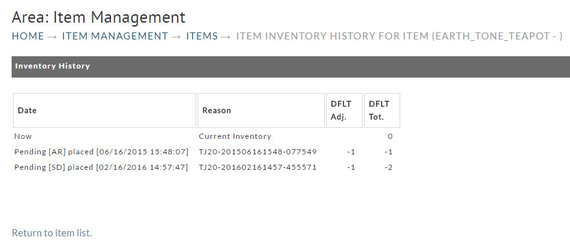...
To start the search, click on the "search" icon in the Items heading. This will bring up the following Item Search screen.
Item Search screen
You can search for items by Description, Item# (ID). Along with this criteria, you can specific a price with "less than" or "more than" parameters. You can specify how you want your items sorted; normal, by description, by item# or by price. Lastly, you can specify if the items are Inactive (yes or no). Once you have entered your search criteria, click on the "Start Search" button. If you want to clear the form to enter new search criteria, click on the "Clear Form" button.
Your search results will appear in a browser window. You can then print the listing or return to the Item Search screen by clicking on the browser's back button.
...
- click on an Item ID link from the Item List screen.
- click on an Item ID link from the Search results screen.
- enter an Item ID in the Quick Jump field on the Items screen
Note: The Item Editor is covered on page of this chapter.
Item Links and Buy Forms
Certain links are associated with your store items and are automatically created when you create your items.
...
UltraCart will create the HTML snippet (link) for each store item you create. The buy links are accessible from the Item List.
| Panel |
|---|
| Navigate: Main Menu |
...
| Items Item Management |
...
First locate the item list that contains the item desired. To obtain a buy link snippet click on the "[View]" link to the right of the Cost column in the row your item is on (see image below.)
The following screen will appear listing the Buy Link, Buy Form, Dynamic Pricing, and Other Links. View of Item "
Buy Link
...
Buy Link
When customers browse your web site (store) and find an item to purchase, they generally click on a button that will place the item into a shopping cart for checkout.
Some buy button examples are shown below.
...
Below is an example snippet of html code for a buy link.
<A HREF="http://secure.ultracart.com/cgi-bin/UCEditor?MERCHANTID=DEMO&ADD=DOGBONE">Buy Now</A>
There are two key variables within any buy link, shown in bold above.
The first variable is the merchant ID. In this example, the merchant ID is "DEMO." Replace the merchant ID with your merchant ID (chosen during signup).
The second variable is the item ID. Each store item has a unique item ID associated with it. The item ID is included in the link's target. In the example, replace DOGBONE with your products item ID.
Buy Link HTML snippet
You or your web designer can copy all the text within the red box and paste it into your web page. With just a little editing it can be turned into the appropriate and complete HTML code.
...
As an alternative to the above buy link, you can opt to embed a form into your website which allows customers to directly enter the desired quantity, as well as select any configured item options. This form can be further customized to match your site's look & feel. A thorough working knowledge of html is necessary. Most merchants have a web designer/editor on hand to accomplish this kind of task.
Item Buy Form
Highlight, copy the form from the above box and paste it into your web page.
...
Dynamic pricing allows you to embed the price of an item onto your static website so that changes to prices in the item editor will be immediately reflected on your site without requiring you to make a HTML edit.
Prior to embedding, you need to configure your Dynamic Price (font style, size and colors). See Dynamic Price in Chapter 3 – Shopping Cart Look and Feel Configuration (page ).
Embedding a Dynamic Price link is also a simple process and similar to the procedure for the Buy Link.
Item Price Image screen
| Name | Description |
|---|---|
| Image Tag | Copy the Image Tag from the first box into your web page where you want the Dynamic Price to appear. |
| Image Source | To view the Dynamic Price (sample) in your browser, copy the Image Source code and paste it into a browser address window and press the enter key on your keyboard to view the Dynamic Price in your browser. |
| JavaScript | We recommend that you utilize the JavaScript version so it allows for complete styling of the text. |
Other Links
This section present has two special links; View Cart Link and Search Link.
| Name | Description |
|---|---|
| View Cart Link | Often times customers will leave the cart to return to your website for additional shopping. Placing this link on your web pages provides navigation that will take customers back to their cart. |
| Search Link | This is a valuable link that takes the customer to an UltraCart search box page. Customers can enter search criteria to search your Item list. A successful search will bring the item(s) into view with buy now buttons so the customer can put them into the car. |
Inventory History Link
This feature applies only to those merchants that have the Track Inventory enabled at each item level (see page ). It basically provides an accountability method to show when, how much, and who adjusted the inventory level of a particular store item.
Adjustments to any item's inventory will be logged along with the date and time of the occurrence, adjustment amount, total (inventory count) and Reason (by whom). This activity can be viewed by merchants at the Item Level.
Navigate within the Item Editor to locate the item you want to view. Click on the "[view]" link under the Inventory History column in the row of the item desired (bordered in red box above). The Inventory History screen will appear.
Each activity will be listed in separate rows. In the example above there are 2 entries:
...
Merchants Using Frames
UltraCart will work effectively with web sites that use frames, but there are some additional configuration requirements to ensure a consistent customer experience.
When the customer clicks the buy link on the merchant's web site their shopping cart displays inside the frame. In order for the secure checkout to take place without showing the customer a warning message, the system must stop using frames. This presents a problem because UltraCart by default returns them to the page that they clicked the buy link on once they've completed the order. This happens to be the contents of the frame instead of the parent URL of the frame.
There are two additional parameters to the buy link that determine where the UltraCart will take the user to:
...
